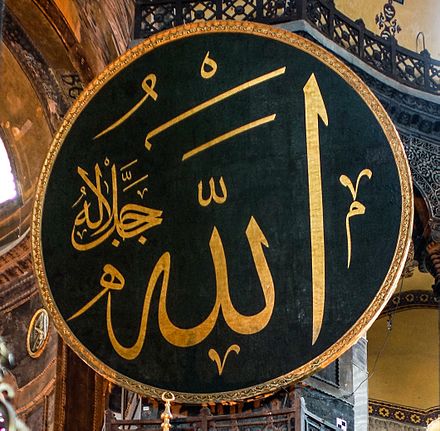The concept of the Kursi—often translated as “the Footstool”—and the Throne (Arsh) of Allah (SWT) stands among the most awe-inspiring and profound subjects in Islamic theology. These terms appear in the Qur’an and authentic hadith, evoking a sense of divine majesty and absolute sovereignty. For centuries, scholars have reflected on their meanings, their relationship, and their significance in the daily lives of Muslims.
Understanding Kursi and the Throne: Foundations in the Qur’an
The Qur’an refers to both the Kursi and the Throne (Arsh) as symbols of Allah’s (SWT) supreme authority and dominion. The most famous mention of the Kursi is in Ayat al-Kursi, the 255th verse of Surah al-Baqarah:
Allah! There is no deity except Him, the Ever-Living, the Sustainer of [all] existence. Neither drowsiness overtakes Him nor sleep. To Him belongs whatever is in the heavens and whatever is on the earth. Who is it that can intercede with Him except by His permission? He knows what is [presently] before them and what will be after them, and they encompass not a thing of His knowledge except for what He wills. His Kursi extends over the heavens and the earth, and their preservation tires Him not. And He is the Most High, the Most Great. (Qur’an 2:255)
This verse, often called the Verse of the Throne, is considered the greatest verse in the Qur’an due to its comprehensive description of Allah’s (SWT) attributes and His dominion over all creation.
Kursi and the Throne (Arsh): What’s the Difference?
A common question arises: What is the difference between the Kursi and the Throne (Arsh)?
Mainstream Sunni scholars clarify that the Kursi is distinct from the Throne. The Kursi is described as the “Footstool” of Allah (SWT), while the Arsh is the Throne, the greatest and most vast of all created things. Ibn Abbas (RA) explained that the Kursi is where the feet of Allah (SWT) rest—though the precise nature of this is beyond human comprehension and must be understood in a manner befitting Allah’s majesty, without likening Him to His creation.
The seven heavens in comparison to the Kursi is nothing but like a ring thrown in a desert, and the excellence of the Arsh (Throne of Allah) over the Kursi is like the excellence of that desert over that ring. (Ibn Khuzaymah in al-Tawheed; al-Bayhaqi in al-Asmaa’ wa’l-Sifaat)
This hadith, narrated by Abu Dharr al-Ghifari (RA), powerfully illustrates the unimaginable vastness of both the Kursi and the Throne, and by extension, the greatness of Allah (SWT).
The Throne in the Qur’an
The Throne (Arsh) is mentioned in the Qur’an about 25 times, always as a symbol of Allah’s (SWT) absolute sovereignty:
Surely your Lord is Allah Who created the heavens and the earth in six Days, then established Himself above the Throne, conducting every affair. None can intercede except by His permission. That is Allah—your Lord, so worship Him [alone]. Will you not then be mindful? (Qur’an 10:3)
Exalted is Allah, the True King! There is no god [worthy of worship] except Him, the Lord of the Honourable Throne. (Qur’an 23:116)
The Qur’an also describes the angels carrying the Throne and praising Allah (SWT) (Qur’an 40:7; 39:75).
Theological Perspectives
Sunni scholars emphasize that while the Kursi and Throne are real creations of Allah (SWT), their exact nature is beyond human understanding. They are not to be interpreted in a way that likens Allah (SWT) to His creation (anthropomorphism). Allah (SWT) is above all limitations and is not contained by space or time.
Some groups have interpreted the Kursi metaphorically as Allah’s knowledge, but the mainstream view, based on authentic narrations, is that it is a real entity distinct from the Throne.
Virtues of Ayat al-Kursi
The Prophet Muhammad (PBUH) highlighted the immense virtues of Ayat al-Kursi:
Whoever recites Ayat al-Kursi after every obligatory prayer, nothing stands between him and Paradise except death. (Sahih al-Bukhari; Sahih Muslim)
This hadith underscores the spiritual protection and blessings associated with this verse. Reciting Ayat al-Kursi is a means of safeguarding oneself from harm, especially from the Shayatin (devils).
Common Questions About Kursi and the Throne
1. Is the Kursi the same as the Throne (Arsh)?
No, the Kursi is the “Footstool” and is a distinct creation beneath the Throne, which is the greatest of all Allah’s (SWT) creations.
2. What is the significance of Ayat al-Kursi?
It is the greatest verse in the Qur’an, summarizing core beliefs about Allah’s (SWT) attributes, and is a source of protection and blessings when recited regularly.
3. How should Muslims understand references to Allah (SWT) being “above the Throne”?
Muslims affirm this as Allah (SWT) described Himself, without likening Him to His creation or asking “how,” as His reality is beyond human comprehension.
4. Are there practical benefits to reciting Ayat al-Kursi?
Yes, it is a means of spiritual protection, especially after prayers and before sleep, as taught by the Prophet Muhammad (PBUH).
5. How do scholars avoid anthropomorphism when discussing the Throne and Kursi?
By affirming the realities of these creations as Allah (SWT) described, without delving into their exact nature or likening Allah (SWT) to His creation.
Contemporary Relevance and Practical Application
In today’s world, where anxieties and uncertainties abound, the message of Ayat al-Kursi and the concept of Allah’s (SWT) Throne offer profound reassurance. Reciting Ayat al-Kursi serves as a daily reminder of Allah’s (SWT) all-encompassing knowledge, power, and protection. It is an act of worship that connects believers to the divine, instilling peace and confidence that nothing occurs except by His will.
Understanding the Kursi and the Throne also deepens a Muslim’s appreciation of tawhid—the oneness and uniqueness of Allah (SWT). It encourages humility, as even the vast heavens and earth are minuscule compared to these creations, let alone compared to Allah (SWT) Himself.
Scholarly Perspectives and Differences
Mainstream Sunni scholars agree on the distinction between the Kursi and the Throne, but minor differences exist regarding the nature of the Kursi—whether it is a literal footstool or a symbol of Allah’s (SWT) authority. The majority, including Ibn Abbas (RA) and leading exegetes, affirm its literal reality as a creation of Allah (SWT). Sufi scholars, meanwhile, sometimes emphasize the symbolic aspects, viewing the Throne as a sign of Allah’s (SWT) power rather than a dwelling place.
Conclusion: Reflecting on Divine Majesty
The Kursi and the Throne of Allah (SWT) are not just abstract theological concepts—they are reminders of the vastness of creation and the absolute majesty of the Creator. Ayat al-Kursi stands as a daily source of protection and spiritual elevation, inviting every Muslim to reflect on the greatness of Allah (SWT) and to seek His nearness through remembrance and worship.
As you recite Ayat al-Kursi, let its words anchor you in faith and awe. Remember that the One whose Kursi extends over the heavens and the earth is always watching, protecting, and guiding you. Let this realization inspire humility, gratitude, and steadfastness in your journey as a believer.
May Allah (SWT) grant us understanding, make us among those who remember Him often, and allow us to benefit from the light and protection of Ayat al-Kursi. Ameen.






